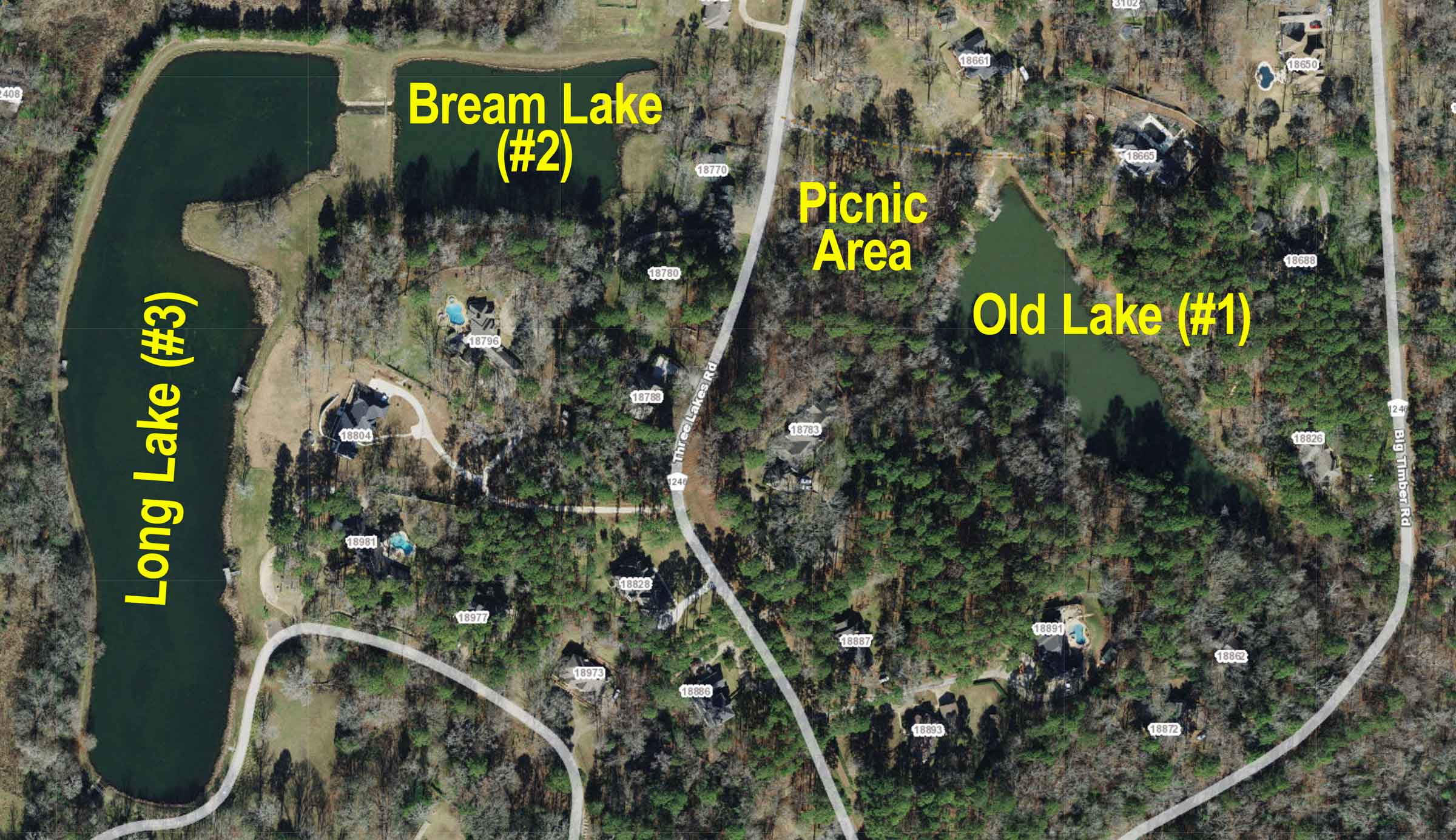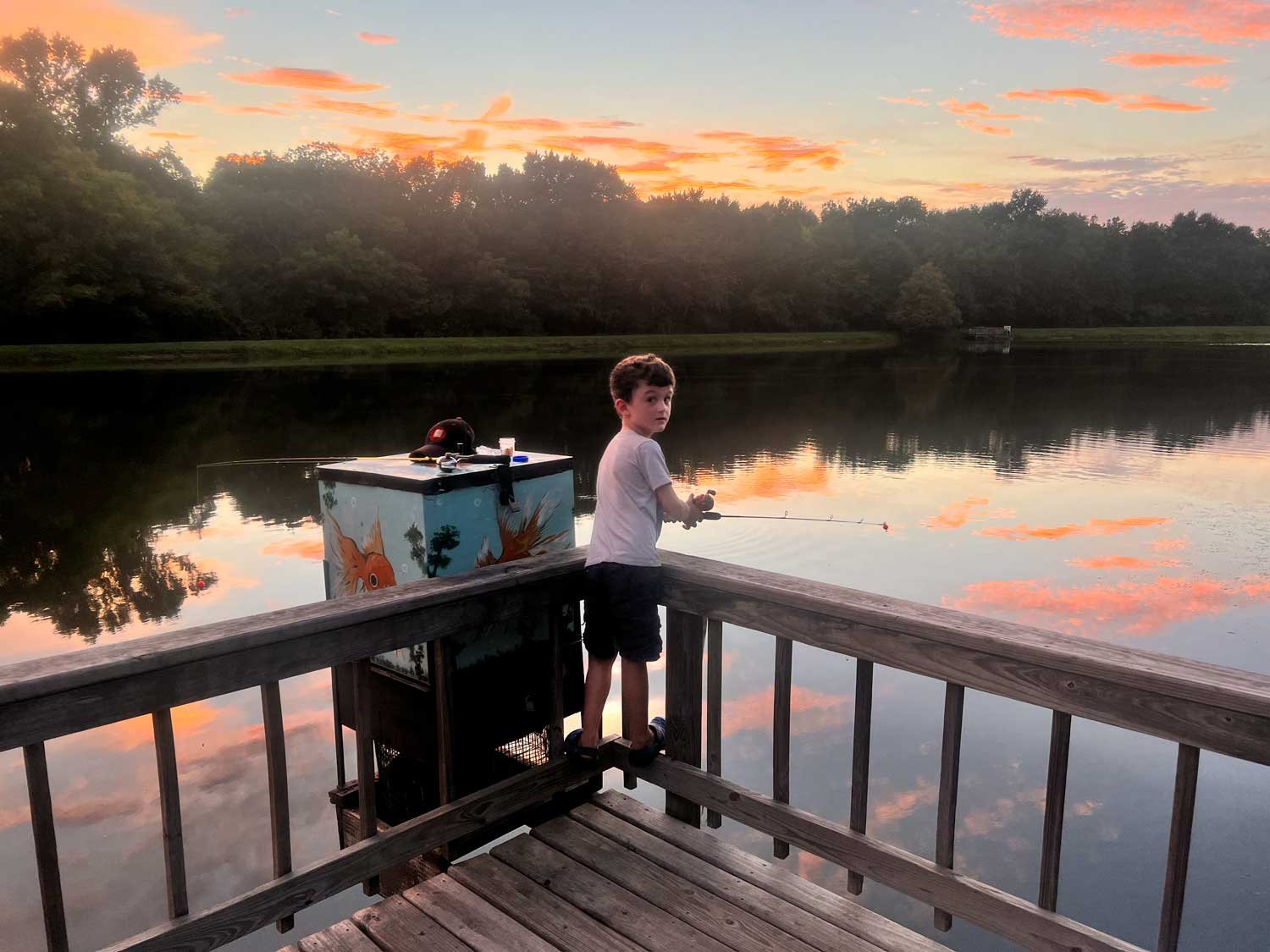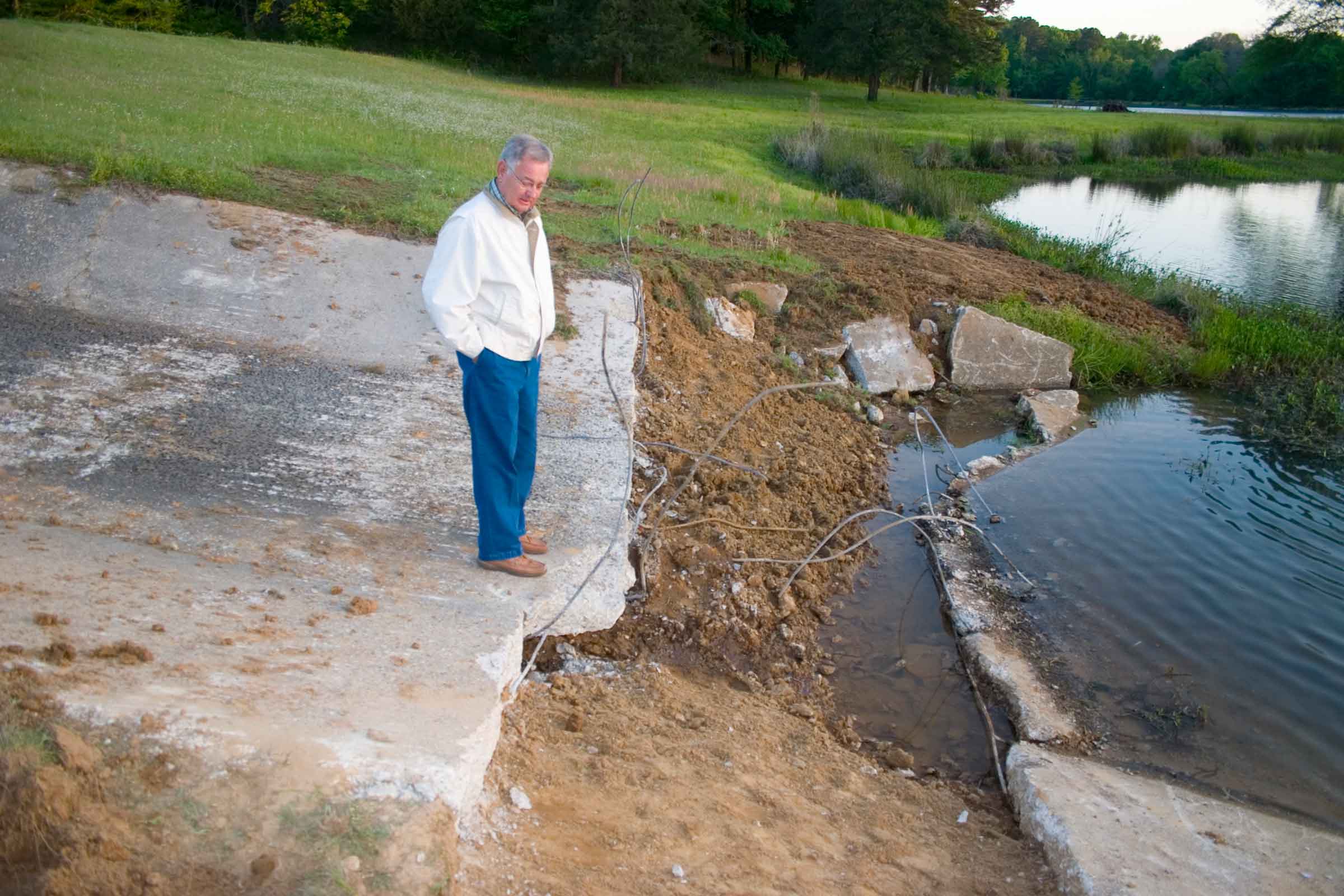Country Place Community Association owns and maintains four lakes and members are encouraged to use them. Our dues are used to keep the dams, piers and bridges in good repair, to stock and feed the fish, and to mow the shores and areas around the lakes.
 The three largest lakes are all fed by the same stream, which begins as a spring on top of the salt dome to our east. There is actually another lake in this chain owned by a farmer. The dam on that lake broke years ago and the silt that flooded downstream choked our first lake for a long time after. The suspended clay has largely settled out now, but we lost a quarter of the lake’s surface area due to the influx of dirt on the upper end. This lake is the Old Lake, or #1 in the sequence. It covers almost three acres and has produced a double-digit bass and a 26-pound high-fin blue catfish, which apparently was mixed in with the fingerling channel cats originally stocked in all our lakes.
The three largest lakes are all fed by the same stream, which begins as a spring on top of the salt dome to our east. There is actually another lake in this chain owned by a farmer. The dam on that lake broke years ago and the silt that flooded downstream choked our first lake for a long time after. The suspended clay has largely settled out now, but we lost a quarter of the lake’s surface area due to the influx of dirt on the upper end. This lake is the Old Lake, or #1 in the sequence. It covers almost three acres and has produced a double-digit bass and a 26-pound high-fin blue catfish, which apparently was mixed in with the fingerling channel cats originally stocked in all our lakes.
The second lake in the chain I refer to as Bream Lake (#2) and represents an experiment in selective stocking undertaken by former Parks & Lakes manager Jerry Jones. His idea was to replace all the existing catfish and bass in this two-and-a-quarter acre lake with copper nose bluegill to make a kid-friendly fishery. Unfortunately, there is no way to control the fingerling fish that wash down from Old Lake (#1) and only a few years later there is a healthy population of largemouth bass along with some big bluegill.
The third in the chain is Long Lake (#3) and is the largest, with almost 8 acres of surface area. It has produced a number of double-digit bass, along with big channel cats and bluegill. There is a population of crappie, although overpopulation has most of these stunted in the 4-6” size range. Still, they make for great forage for our largemouth bass. I caught my personal best out of this lake, a 10.5 lb December bass, and know of at least one 13.5 lb fish taken here. Both bass were returned to the water.
A lot of CPCA members get their exercise walking around Long Lake. It’s a natural walking path.
 Hidden Lake (#4) is located halfway down our one-mile stretch of private road, Lakeshore, and sits 170 yards back in the woods. It is the smallest of our lakes, at only nine-tenths of an acre, but it is a wonderful place to enjoy the natural beauty of Country Place
Hidden Lake (#4) is located halfway down our one-mile stretch of private road, Lakeshore, and sits 170 yards back in the woods. It is the smallest of our lakes, at only nine-tenths of an acre, but it is a wonderful place to enjoy the natural beauty of Country Place
If you’re a CPCA member and have children who like to fish or want to learn how, a beginner’s rod, a float, some split-shot, panfish hooks and some worms will catch bream off any of our piers. And you never know when one of those big channel cats will show up hungry!


